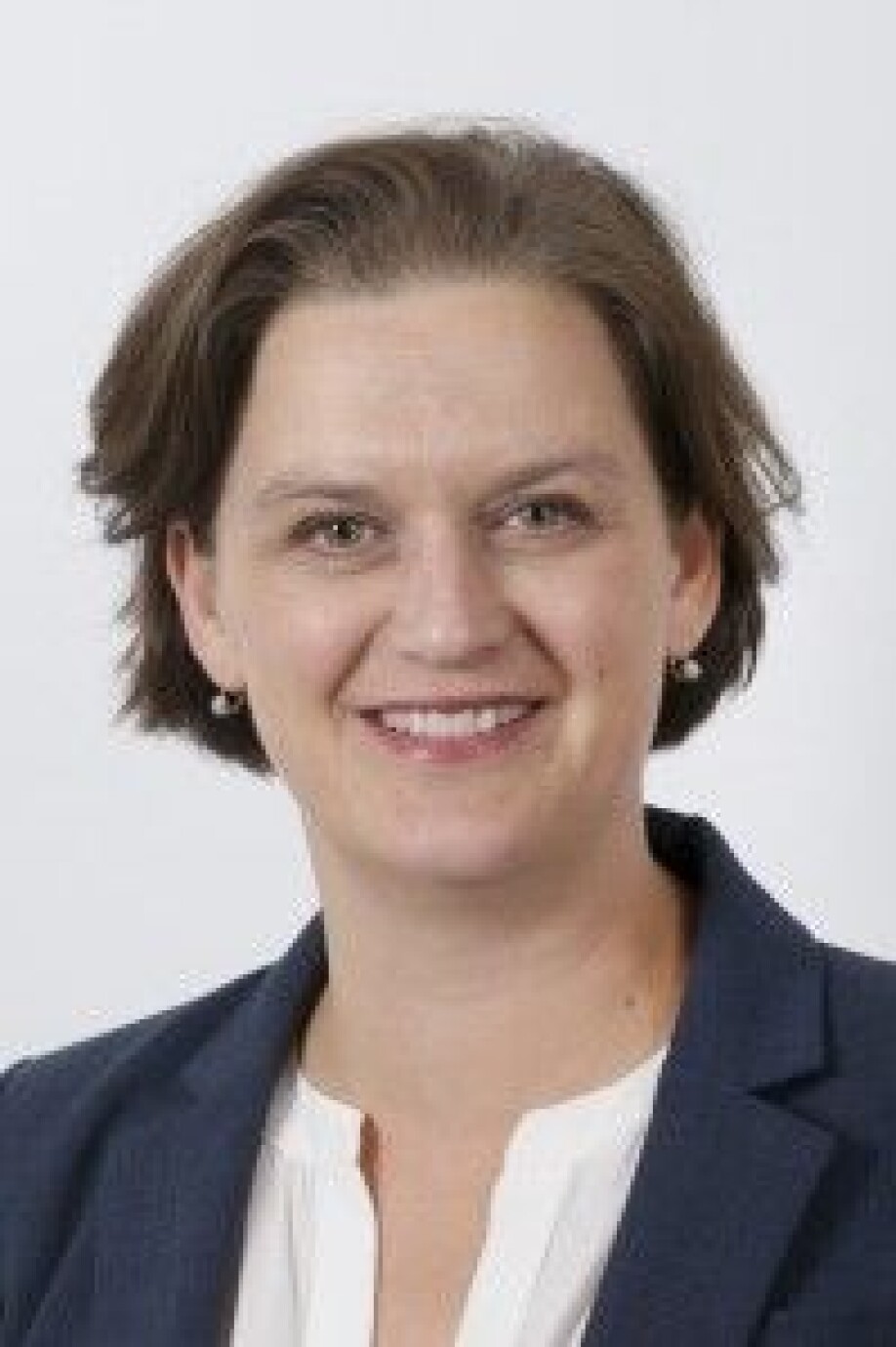
Efforts to promote peace can make women more vulnerable
In recent years, gender has become an important factor in the international work against extremism. But some researchers fear that when women become part of the first line defence against radicalisation, they also become more vulnerable.
In year 2000, the UN Security Council passed a resolution on Women, Peace and Security. The resolution declares that member states commit to protecting women and girls against violence, particularly sexual and gender-based violence, in armed conflicts. Moreover, member states are under obligation to strengthen women’s participation in peace processes, to support women’s peace work, and to increase women’s political participation at all levels.
The resolution has later been followed up by several other official documents from both national governments and international organisations. Together, they make up an international framework for work with women’s roles in conflicts and conflict prevention.
Women as security actors
“An important part of the agenda that originates from the UN resolution is to challenge traditional gender roles. It is a common saying that it is impossible to achieve permanent peace after a conflict unless women participate in the peace negotiations,” says professor at Univeristy of Oslo (UiO) Inger Skjelsbæk.

“In order for that to happen, women need an education and representation in political fora. Thus, the agenda follows closely the UN’s Sustainable Development Goals.”
Skjelsbæk is director of Centre for Gender Research. She is also part of UiO’s Center for Research on Extremism (C-REX), where she is head of the research group on gender and extremism together with Katrine Fangen.
Skjelsbæk recently published an academic article co-written with colleagues Julie Hansen and Jenny Lorentzen at Peace Research Institute Oslo (PRIO). Here, they have gone through a large number of official documents dealing with gender and the prevention on extremism. Their aim was to explore how gender roles and gender identity are referred to in documents like this, and how gender is connected to preventive work.
One interesting finding is that while the UN resolution from 2000 is progressive, change-oriented and based on the assumption that women have various identities and roles, the rhetoric in many of the more recent documents reflects directly the opposite.
“Many of the texts we have examined are based on established gender roles, and ask women to serve as security actors in their own homes and local communities. It is stated that since women often have traditional roles, they may prevent extremism among their male relatives,” says Skjelsbæk.
Women regarded as peaceful
Many of the official documents about gender and conflict prevention seem to be founded on myths about how women’s and men’s roles in conflicts are fundamentally different from each other: Women are often considered inherently peaceful by nature. If they participate in extremist violence, this reflects a deviation from the gender norm. The common explanation to such a deviation is that the women have been persuaded by a male relative or a boyfriend, or that they have experienced some sort of personal trauma. If a man participates in the same type of violence, however, they do so out of ideological conviction. Thus, women are often portrayed as natural and important counter voices to extremism. They can reduce conflicts and talk sense into more ideologically driven brothers, sons and fathers.
“Both we and other researchers maintain that it is problematic to highlight women as counter voices to extremist rhetoric and politics. When doing so, women simultaneously become more exposed and vulnerable in their own private sphere,” says Skjelsbæk.
She explains that this is a very real problem for many who work in voluntary organisations with international funding in countries where there are extremist groups.
“These organisations’ main activity may be something else, such as women’s education. Then the funding party suddenly wants them to do something different, such as counter-terrorism efforts. This can make them very vulnerable, and it is something that needs to be considered thoroughly when thinking it is beneficial to ally with women and use them in preventive work against violence.”
Focus on Islamism
At the same time, the researchers have found few signs of reflection upon men’s role in the documents that they have examined.
“Without a second thought, men are defined as the problem, which is also unfortunate. Not all men become extremists,” she says.
“The few places in the documents in which men are mentioned as potential counter-voices that can help prevent extremism, the men referred to are figures in leadership positions, for instance in the mosque.”
The texts that have been investigated primarily address recruitment to Islamist extremist groups in the Global South. The researchers did not find any documents addressing prevention of recruitment of women to right-wing extremist groups in the Global North.
“The extreme right, which both Norway and Europe currently consider to be the biggest extremist threat in our part of the world, is not addressed in these documents,” says Skjelsbæk.
“This is probably because we have only studied documents from the period between 2000 and 2017. If we had done the same analysis with more recent texts, this would probably have looked different.”
We know that women who participate in extreme right groups are active and often have leadership positions, according to Skjelsbæk.
“The thought that women are inherently peaceful and do not endorse extremist ideas, is incorrect. The policy literature does not seem to have taken research on the field to heart. In other words, the political thinking in terms of gender and what role the sexes might play in preventive work needs to become more nuanced. The same applies to how we think about recruitment strategies to the extreme right.”
Complex waters
According to Skjelsbæk, some of the explanation to the divide between the progressive UN resolution and the traditional view on gender reflected in many of the other documents may be that this is a field that the various interested parties approach in very different ways.
“One involved team works with Women, Peace and Security, whereas antiterrorism is handled in other political communities. Therefore, the entire field is characterised by silo mentality. But this is also highly complex waters,” she says, and continues:
“Some extremist groups such as Boko Haram and IS are founded on extremely conservative gender roles. If we base our approach to extremist prevention on a progressive political agenda, we may risk that these groups rather accelerate their struggle for traditional gender roles.”
Women in the Security Council prioritised
Last year, Norway was elected as member of the UN Security Council for the term 2021–22. The government has announced that work aimed to solve and prevent conflicts, protect civilians and secure women’s participation and rights in peace processes will be prioritised areas for Norway in the Security Council.

State Secretary in the Ministry of Foreign Affairs (UD), Audun Halvorsen, writes in an email that they are aware of the danger that women may be exposed to when they participate in security and preventive work. At the same time, he emphasises the importance of not letting this fear result in the exclusion of women from international political fora:
“The fact that women who were invited to talk at the Security Council were subjected to reprisals is something we take very seriously,” he says.
“But even the women who were exposed to this clearly express that the worst thing the international community can do is not letting women be heard.”
The women’s networks that work in close collaboration with the Security Council all agree that protection should not cause less participation, according to Halvorsen.
“The involved women must be included in the assessments and decisions that are being made. This means that all preventive measures and security measures must be adjusted to each individual situation, and the measures must be developed in dialogue with the involved parties. There is no simple ‘one size fits all’ solution here.”
“Visibility is the best protection”
According to Halvorsen, Norway works to ensure that the Security Council takes the gender perspective into consideration in all their global conflict prevention and peacebuilding efforts , including the prevention of and struggle against violent extremism. Women’s participation, including young women, is an important part of this work, he emphasises.
“Women, like men, can take on various roles during conflicts and vulnerable situations. We therefore think it is particularly important to support and encourage women’s involvement and leadership,” he says.
“This may contribute to the prevention of violent extremism, to deradicalisation, reintegration and reconciliation. In the UN, Norway supports the Secretary General’s Plan of Action Against Violent Extremism.”
Halvorsen emphasises that the balance between security and participation also applies outside the UN context, on other areas in which Norway supports women’s participation in peace and human rights work.
For instance, Norway supports the International Civil Society Action Network, The Women’s Alliance for Security Leadership (ICAN WASL) and their work. This is an umbrella organisation supporting approximately ninety women’s networks working to combat violent extremism around the world.
“These networks live with threats and reprisals on a daily basis, but have nevertheless spent the last year fighting against extremists who use the pandemic to promote their own cause,” says Halvorsen.
“The women’s networks have presented alternative narratives, and played an important part in the struggle against radicalisation in 2020. ICAN WASL is also clear in their conviction that the best protection that these women can possibly get is to promote their names and the work that they do.”
More diversion in research
Inger Skjelsbæk at UiO explains that when it comes to gender and extremism, research develops quickly.
“In particular, we need more research on mobilisation through anti-feminism. Here, we’re especially talking about the extreme right and online communities in which people are radicalised through clear discourses on gender and anti-feminism,” she says.
Again and again, we see that gender becomes a focal point for much populist politics, and a peg on which to hang a number of political ideologies. According to Skjelsbæk, this is noticeable both in our own part of the world and other places, and we need to develop a better understanding of this phenomenon. She has noticed that this is a topic evoking the students’ interest.
“As director of Centre for Gender Research, which has traditionally been dominated by women, I find it intriguing that a lot of men are interested in questions related to security, extremism and gender,” she says.
“They observe that there is something about the recruitment to these groups that may be connected to gender, and that we need to look at masculinity in new ways. As a result, we get a larger number of various types of researchers studying these issues, which is good for both gender research and research on extremism,” she says.
Translated by Cathinka Dahl Hambro.
This article was first published on Kilden kjønnsforskning.no































